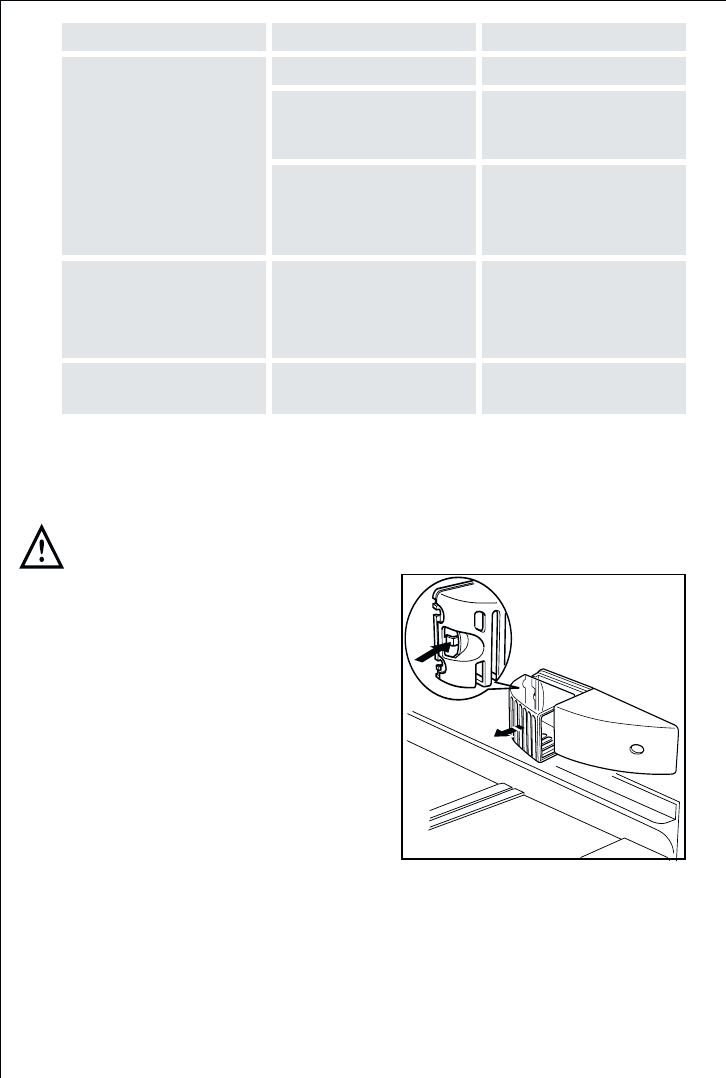21
La température de surgélation
ne suffit pas, le voyant rouge
est allumé, l’avertisseur de
température retentit.
L’appareil se trouve à côté d’une
source de chaleur.
Veuillez consulter la section
"Lieu d’installation"
Défaillance de l’appareil.
Activer le commutateur de
congélation rapide, laisser le
congélateur fermé, contacter le
service après-vente.
La température de surgélation
ne suffit pas, le voyant rouge
est allumé, l’avertisseur de
température retentit.
La température est mal réglée.
Veuillez consulter la section
"Mise en service".
La porte est restée ouverte trop
longtemps.
Ne pas ouvrir la porte plus
longtemps que nécessaire.
Actionner le commutateur de
congélation rapide.
De trop grandes quantités d’ali-
ments ont été entreposées au
cours des dernières 24 heures.
Actionner le commutateur de
congélation rapide.
Dérangement
Cause possible Remède
L’appareil ne fonctionne pas,
aucun voyant de contrôle ne
s’allume.
L’appareil n’est pas mis en servi-
ce.
Mettre l’appareil en service.
La fiche n’est pas branchée ou
ne donne pas de contact.
Brancher la fiche secteur.
Le fusible a déclenché ou est
défectueux.
Vérifier le fusible, remplacer le
cas échéant.
La prise de courant est défec-
tueuse.
Les dérangements du réseau
électrique doivent être sup-
primés par votre électricien.
L’appareil refroidit trop forte-
ment.
La température est réglée trop
bas.
Mettre temporairement le
régulateur de température sur
une température plus élevée.
Contacter le service après-ven-
te.
Le voyant vert est défectueux.
Le voyant vert ne s’allume pas,
le voyant jaune est allumé lor-
sque la fonction Frostmatic est
activée.
Contacter le service après-ven-
te.
Le voyant jaune est défectueux.
Le voyant jaune ne s’allume pas,
le voyant jaune est allumé lor-
sque la fonction Frostmatic est
activée. L’appareil fonctionne.
Formation importante de givre
dans l’appareil, éventuellement
aussi au joint de porte.
Le joint de porte n’est pas étan-
che (après changement du sens
d’ouverture de la porte).
A l’aide d’un sèche-cheveux,
réchauffer avec précaution le
joint de porte aux endroits des
fuites (pas plus chaud qu’env.
50 °C). Remettre en même tem-
ps le joint de porte en forme à
la main de manière à ce qu’il
soit de nouveau en position
correcte.








































































